The music we danced to in Auckland’s clubs evolved in the last few years of the 1980s. Likewise, the sounds being made in the increasing number of small studios in the city changed with it, be they The Lab, the newly upgraded and prolific studio at Radio B (later 95bFM) or Alan Jansson’s Module 8/Uptown. In 1986/87, Chicago and NY house music hit the city’s inner-city clubs in a big way with the more soulful deep house sound finding favour. Dub, slower soul beats typified by Soul II Soul and the new Bristol bass – along with the so-called golden age of American hip-hop and techno – all influenced the dancefloors. A distinct and unique Pacific flavour was added to much of this and increasingly the records we were making for ourselves could only have come from the biggest Polynesian city on the planet.
Auckland’s dancefloors also benefited from the widescreen playlists of the key DJs as the decade turned, in particular Roger Perry, the unchallenged king, whose sets would include all these styles and much more over several hours; something not found in the more genre-specific clubs found in most of the rest of the world.
In the last half of the 1990s, both the sounds and the composition of the then very vibrant Auckland nightlife evolved yet again. Around 1998 the scene migrated from High Street up to K Rd, and the clubs became more genre specific with house/techno music, breaks, and drum and bass becoming more dominant. The days when a DJ’s set would range across styles were gone. The embrace of Pasifika was also in retreat in clubland, although this took a little longer. However by the early 2000s the days of separate brown and white clubs seemed to have returned. But for a few years, clubland was all-embracing. These are some of the songs we made to dance to in those years.
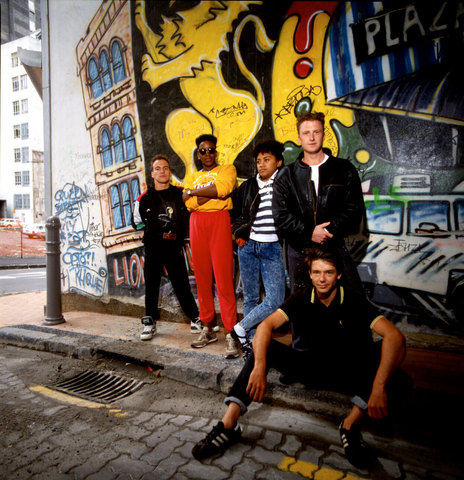
Sistermatic - Benny Staples, Koi-Ski, Sina Saipaia, Syd Pasley, Mark Clare
Sistermatic – Million Dollar (Propeller, 1989)
There is quite a story about this one: The Newmatics were one of the early 80s Propeller bands (on the sub-label Furtive) who made very danceable ska and soul records, some of which got a spin or two at A Certain Bar. They split in 1982 and all the members eventually ended up in the UK in the mid-80s. Having been immersed in London clubland, they slowly returned in the last part of the decade with drummer Benny Staples staying in the UK (he joined The Woodentops, who had a massive acid house hit in the 1988 European Summer of Love with ‘Why, Why, Why’). In late 1988, Benny returned to New Zealand for an extended summer and, with other former Newmatics Syd Pasley and Mark Clare, regrouped as Sistermatic. They added a young Samoan singer, Sina Saipaia, and an American rapper Koi-Ski (real name La Koi Wooten, she was in the country to play professional basketball), then headed into Keith Ballantyne’s studio in Ponsonby where they recorded the topical ‘Million Dollar’, a house tune about white-collar crime. It was released on Propeller on 12" and 7" in early 1989 via Festival. However, the lyrics referenced a futures dealer, Michael James Easton, who had been arrested while on the run from the law in Australia (13 charges of fraud) and his lawyer threatened legal action on the day of its release. Festival Records (the distributor) freaked and the record was pulled from retail the day after it had hit the stores and never reissued. Despite that, 100 or so promos including 50 white labels had gone out, Radio B was playing it and it became a club hit. A sequel, ‘Pacific Beats’ by Pacific 909 (aka Benny Staples), was recorded but never arrived. The banker, now deceased, was found guilty.
Listen to ‘Million Dollar’ by Sistermatic
Headless Chickens – Gaskrankinstation (Flying Nun, 1989)
Roger Perry extended his now-established tradition of hand-picking eclectic non-club New Zealand tracks he thought would work on the floor by regularly spinning the Chooks soon-to-be-classic tale of urban grind. It may have seemed like a left-field choice, but it both worked and linked him to a band that was quickly moving in a more rhythm-orientated direction. Bassist Grant Fell played a big role in assorted dance parties from 1989 onwards and Roger himself got credits for beats on future Headless Chickens releases. Things like this are why Roger Perry matters so much.
Upper Hutt Posse - Do It Like This (Rhythm Factor Remix) (Southside, 1990)
Upper Hutt Posse arrived in Auckland in 1988 and were quickly part of the inner-city club scene centred around High Street; as well as performing, they recorded for Murray Cammick and Simon Lynch’s brand new Southside label. The fruit of which was the 1989 Against The Flow album, mostly recorded at Mandrill in Parnell: the first hip-hop album by a local act. Simultaneously with the album, Southside released ‘Do It Like This’, produced by Dean Hapeta and George Hubbard, as a single on 7" and cassingle. The tune used a fairly dominant sample from KC & The Sunshine Band’s 1975 hit ‘Boogie Shoes’ (without credit – you could get away with that, then) and Simon Lynch asked ace Auckland keyboard player and producer Stuart Pearce if he’d have a go at a remix. At the time, Stuart was based in Sydney, working with renowned Australian producer Dave Marett out of Marett’s home studio. The pair combined their work and were, among other things, doing remixes as The Rhythm Factor. They rebuilt the single as a Chicago-styled hip-house record with new, original, beats (and the KC sample) and it was released in 1990. The band wasn’t entirely sure about the result but the Auckland dancefloors instantly were and it was a massive club hit.
Listen to the Rhythm Factor remix of ‘Do It Like This’
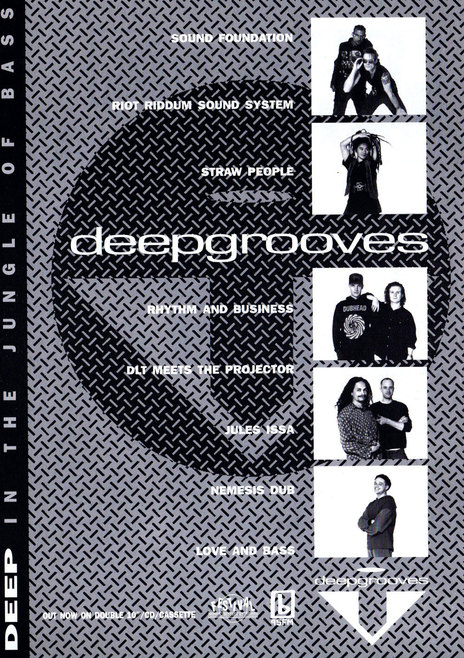
An advertisement for the first double 10-inch Deepgrooves EP
Jules Issa – Dangerous Game (Deepgrooves, 1991)
When it arrived in 1991, Bill Latimer, Mark Tierney and Kane Massey’s new Deepgrooves label upended Auckland’s recorded music scene. A nifty double 10" sampler captured the new wave of Pacific soul, electronic rhythms and dub that could be heard all over the city: live, in the clubs, at the regular pop-up dance parties in Symonds Street, Grey Lynn and downtown. Several tracks found dancefloor favour but the standout was Jules Issa’s remake of Diatribe’s 1983 classic ‘Dangerous Game’, produced by Mark, Jules and Joost Langeveld (another name that we will see again on this list), with Mark engineering. A perfect, rhythmically languid and dubby tune (what UK reviewers of the day used to term a shuffler), the fabulous single mix was substantially different to the 10" mix and was the go-to version for DJs. But sadly it has only ever been available on a long-deleted CD single. Jules, originally from Porirua, was part of the Twelve Tribes Of Israel sound-system collective. She followed this with the 1995 album Found In You and in 2023 continues to perform. A stone-cold killer record for the ages that needs to be reissued, hopefully on 12" vinyl.
Listen to the single remix of ‘Dangerous Game’
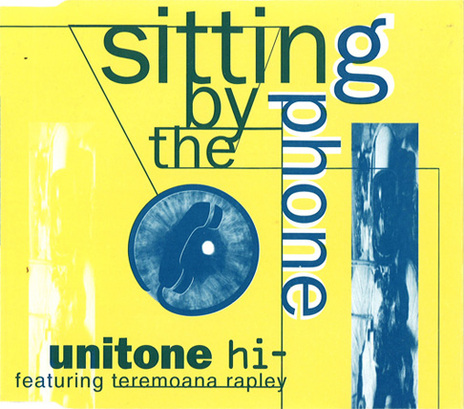
Unitone HiFi - Sitting by The Phone (1992)
Unitone HiFi featuring Teremoana Rapley – Sitting By The Phone (Deepgrooves, 1992)
Radio B host, DJ and all-round influencer “Stinky” Jim Pinckney and bassist/programmer/engineer Joost Langeveld formed Unitone HiFi around 1991 after Jim had provided samples for Eddie Chambers (Eddie would later join Unitone HiFi in NYC) and Joost’s Nemesis Dub Systems. Kane Massey and Mark Tierney had asked Joost to work on a track for a single release with Teremoana Rapley (Upper Hutt Posse and Moana and the Moahunters) and he invited Jim to work with him on it. ‘Sitting By The Phone’, an infectious, almost lovers, skank, was the duo’s debut single (and the sixth release on Deepgrooves). Featuring a sublime lead vocal by Tere, coupled with the equally fine Bobbylon (Hallelujah Picassos) – and a guest spot by rapper Just One (aka Sol-E) – prior to its release it was all over student radio (which was not surprising given who created it). The mix that mattered in the clubs was the Ansaphone Mix. As with ‘Dangerous Game’, it was a record you heard everywhere, day and night that hot Auckland summer. Trivia: the cover was originally just Unitone Hi, but missed the Fi which was added after the sleeve was designed. It was added to the artwork in (very tidy) felt pen.
Listen to the Ansaphone mix of ‘Sitting By The Phone’
Houseparty – Dangerous Love (Southside, 1992)
Philip Fuemana’s important place in the South Auckland music community is well documented, as is his work mentoring young acts, especially in Otara. Houseparty, Phil’s own musical vehicle, started life as White Boy Black with Matty J Ruys on lead vocals. Signing to Southside, they were sent across to Sydney to record a single with Stuart Pearce and John Diamond (aka JD), the guitarist from Ardijah and The Moahunters, at Dave Marett’s Greystoke Street home studio. That done, the band returned to New Zealand, whereupon Matty was pushed out of the band which complicated things somewhat with a new single on its way. The band’s name was changed to Houseparty and his lead vocal was replaced by Christina Fuemana’s fabulously rich voice (supported by Mark Hotu’s rap), over a bed of what Stuart admits was a beat borrowed from Soul II Soul, with a new bassline. Coupled with a neat video, it’s one of the great lost 90s singles from Aotearoa and should have been a massive crossover hit. Club DJs such as Manuel Bundy and Soane knew it and – slotting perfectly into the lower tempo soulful house sound then fashionable in the Northern Hemisphere – so did UK DJs, including Norman Jay and Gilles Peterson who both played it that summer. Southside, burnt by the cost of the vocal change, passed on the album which came out a year later on Deepgrooves (under the name Fuemana) with a remix of this included. However, the original Houseparty version is the one.
Anthony Ioasa – Baby You Know (Pacific Round House Remix) (Deepgrooves, 1993)
Anthony Ioasa was a member of an extraordinarily talented Samoan family trio from the North Shore who would record and release a densely melodic, jazzy soul album Black Sand Shore in the mid-90s. Anthony had already established himself as both a songwriter (he would be awarded an APRA Silver Scroll in 1995 for co-writing ‘Sweet Disorder’ for Strawpeople) and a studio boffin: he’d been the kid hanging out at The Lab with a thousand good ideas since the start of the 1990s. ‘Baby You Know’ was recorded at the same sessions as Unitone HiFi’s ‘Sitting By The Phone’, and was also planned a Deepgrooves single release (in the end it only appeared on Deep In The Pacific Of Bass, the second Deepgrooves compilation). Produced by Joost Langeveld and mixed by Mark Tierney, the record sat somewhere between Inner City’s ‘Good Life’ and some of the deep vocal house coming out of New Jersey – but with Aotearoa’s morning after-the-club sun coming up over a West Coast beach. By mid-2001, having produced records as diverse as TrueBliss’s double-platinum album and Annie Crummer’s ‘U Soul Me’, Anthony was in New York City working on sessions for US house tracks, heading back home in 2004 to add keyboards to Soane’s classic album Tongan Chic which also featured his vocal on ‘Where Do We Go’, one the biggest club (and dance-radio) records in the city that year.
Listen to the Pacific Round House remix of ‘Baby You Know’
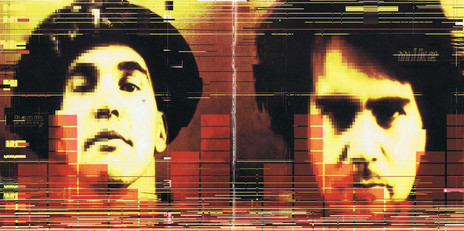
Benny Staples and Mike Nielsen, Lava Lava, 1997
Lava Lava – Let It Flow (Honeydipped Records/Huh!, 1994)
After Benny Staples left The Woodentops he was commissioned to compose the music for the 1990 Commonwealth Games opening ceremony. This successfully meshed the traditional sounds of Aotearoa with contemporary electronic instruments (to an audience of millions), and Benny spent time with the likes of acclaimed UK dub producer Adrian Sherwood honing his craft. In 1994 he teamed up with fellow New Zealand expat, engineer Mike Nielson, whose credits included much of Jamiroquai’s work, Pet Shop Boys and Underworld. Calling themselves Lava Lava, the duo released their debut EP Mud Pool at the end of that year. The atmospherically dubby and very percussive ‘Let It Flow’ was the lead track and, across 1995 and 1996, found itself a club favourite both in South London and in their homeland. Simultaneously, a string of sold-out live shows took place, mostly at Cause Celebre in High Street. Vinyl imports of the 12" were followed by a strong-selling CD compilation on Huh! in early 1997.
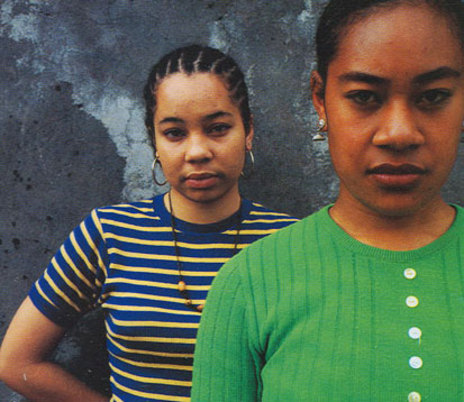
Sisters Underground
Sisters Underground – In The Neighbourhood (Sisters On The Boulevarde Dub) (Second Nature, 1994)
‘In The Neighbourhood’, taken from the 1994 Proud compilation, was an instant Urban Pacific classic (and a Top 10 single for the Ōtara duo). However, on the dancefloor the version that everyone wanted was the Australian extended dub mix, created by the late Robert Racic. Only found on the Australasian 12" version which had limited distribution in New Zealand, the remix stretched the familiar three-minute radio mix out to over eight minutes of exuberant dubby garage house. It was an even bigger club hit across the Tasman, topping the Sydney dance chart, thus becoming the very first act from our side of the pond to do so and making the vinyl single very collectable in recent years (it was reissued on Proud in 2023). For the lower bpm dancefloors, Racic also offered up the terrific hip-hop ‘Uptown’ re-edit as well. Alright ...
Nathan Haines and Manuel Bundy – Sonovabitch (Huh!, 1994)
‘Sonovabitch’ appeared on Nathan Haines’s debut album Shift Left, but it was also lifted off as a track on the limited edition 12" EP The Uptown Project, and promo-ed as a single to student radio. The supremely funky cuts by Manuel overlaid with Nathan’s sax slotted perfectly into the acid jazz of the mid-1990s, which provided a soundtrack to the growing number of bars, clubs and cafes that filled the High Street zone. DJs and the public agreed.
The last dance ...
Jam This Record – Jam This Record (Propeller, 1988)
Inspired by a pre-release promo of future UK hit ‘Bomb The Bass’s ‘Beat Dis’, a few of us decided “we can do that” and gave it a go. Recorded over several late smoke-filled nights at Alan Jansson’s Module 8 Studios (in Waverley Street, behind the then Real Groovy site at 438 Queen Street), Jam This Record was Alan, Car Crash Set’s Dave Bulog, ex-Feature and Dead Can Dancer James Pinker and, for my crimes, me. We threw a load of samples at it (the key soundbite ‘Jam This Record’ was actually lifted from a Def Jam promo VHS; it was Rick Rubin saying “jam means record”) and struggled with the beats a little, something that was never resolved. I decided to release it and Festival Records’ Simon Baeyertz came up with a scam/plan. We would press up some as unmarked white labels and service it to clubs as some sort of rare groove – the recent Stock Aitken Waterman created ‘Roadblock’ had recently pulled off the same scam. We did and the record started getting club play nationwide. I then pressed up another 500 white labels and we shipped them to the UK and US where they were distributed to dance stores, again, as “promos”. Incredibly, in August 1988, it charted for two weeks on the UK club chart.